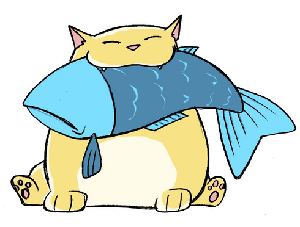The pet food aisle at your local supermarket or pet shop can be bewildering and slightly intimidating, to say the least. With the pet food market ever expanding, many cat owners are veering towards raw, or BARF diets (bones and raw food). Whatever you choose to feed your cat, we recommend a well-planned and species appropriate diet. Home prepared diets (cooked or raw) are often unbalanced and lead to serious health problems. Cats are strictly carnivores, and therefore can  never become vegetarians (or vegans!).
never become vegetarians (or vegans!).
It is difficult to find unbiased advice or information on raw feeding versus processed diets, and at Cambridge Cat Clinic we do not solely recommend one or the other, but wanted to give you the facts.
Lovers of raw feeding are of the opinion that processed diets cause ill health and are unnatural, whereas die-hard commercially processed diet fans believe that BARF is unbalanced and spreads Salmonella, Campylobacter and other harmful organisms. There are extreme opinions on both sides of the fence, which probably means that the “correct” diet of choice for our pet cats is somewhere in the middle!
Things to consider when choosing BARF:
Composition: Most owners would not be willing to feed their cat whole rabbits, so many commercial raw food is prepared in convenient mixtures that have already been minced. The food is then defrosted before being fed. Some would argue that by changing the composition of the raw food, we are beginning to process it, but by commercially producing the raw food, the food manufacturers are ensuring that the food is balanced and complete. The frozen nuggets or blocks contain all parts of the food animal, including organs and ground bone, ensuring that all nutrients are provided.
Storage: Commercially prepared raw options are supplied as complete diets in frozen or freeze-dried forms, allowing for safe storage. It is essential to follow the defrosting instructions carefully, as you would with your own food. Whilst processed kibble biscuits can be safely left out for a day or so, you may need to feed your cat more little and often, to suit their normal feeding pattern. It is recommended that any uneaten food is disposed of after 20 minutes. Feeding a raw diet may be more difficult in summer months, when the weather is warmer.
Behaviour and feeding puzzles: One of the benefits of BARF that cannot be denied is the environmental enrichment factor for cats. Although we may not always like it, cats are natural hunters, and receive enjoyment and mental stimulation from catching and eating their prey. Tearing apart and chomping on a raw chicken wing is great physical and mental exercise. When we then mince the chicken wing, and mould it into bite-size nuggets, before freezing it, we are taking away this aspect. It is also very difficult to safely incorporate raw food into feeding puzzles and other no-bowl feeding systems – not to mention the cleaning! BARF diets are not suitable for timed feeders. If a commercially prepared raw diet is used, it would be ideal to feed your cat a suitable raw bone, or raw duck/chicken wing once a week, to increase the enrichment benefit of feeding raw.
Dental health: Fans of raw food believe that BARF diets help to maintain the health and condition of cat’s teeth. By chewing on bones and tearing raw meat, cats have less dental disease. It is difficult to provide evidence for this, but we do see healthier teeth in some prolific hunters who consume the prey they catch.
Safety risks: One of the big concerns of BARF is the health risks to cats and humans. Cooking food helps to kills harmful organisms, such as Listeria, Salmonella, E.coli and Campylobacter, that may be otherwise present in raw food. These organisms can be passed on to humans living in the same environment as your cat, and can cause serious illness if not managed correctly. For this reason, Cambridge Cat Clinic does not recommend that owners consider a raw food diet for their cats in homes with young children, the elderly or other immunocompromised individuals. It is also not recommended to feed BARF to cats that are immunocompromised e.g. cats with Feline Immunodeficiency Virus, or those receiving chemotherapy. Deep freezing is known to kill some harmful organisms, and of course correct handling and storage of food is essential.
There is also a potentially increased risk of intestinal parasites, which means that all cats should receive monthly prescription parasite control.
Quality and nutrient value: With all pet food, it is important to ensure the high quality and nutritional value of the ingredients. Where the food comes from is as important as what is inside it. For example, a raw diet containing wild rabbit is likely to be more nutrient dense than a farmed rabbit, but the wild rabbit’s fat and protein content may vary between seasons. Also, wild kangaroo from the Australian outback, may be more preferable to you, than an intensively farmed chicken from Thailand.
Animal welfare: When selecting either processed or raw food diets, where possible choose brands that care for the animals used to feed your cats. Look out for the red tractor farm assured and RSPCA assured badges, with ingredients that are traceable. We also recommend only choosing raw or processed diets that are recommended by the Pet Food Manufacturers Association.
High protein, low carbohydrate: As we have mentioned, cats are carnivores and need to eat animal-derived protein. Despite this, many (most) commercially processed diets contain carbohydrates. Many diets are quoting “grain-free”, which is following on from the human market, but may still contain carbohydrates in large quantities, such as potato and rice. Even when we look on the back of the tin and it says 45% protein, we still aren’t sure where this protein comes from, and the quality. Raw food diets tend to be a bit more transparent in their ingredient list, and have very high levels of animal-protein sources (85-95%), which is far preferable for our small tigers.
Feeding bones: Feeding raw bones can provide great mental and physical stimulation for your cat. Again all raw food safety precautions apply, and it is important not to feed cooked bones (these become brittle and can splinter, causing harm). Please speak to your vet regarding bone selection, as this is dependent on your cat’s age, lifestyle and bone eating experience. Many raw diets will contain minced raw bones, but again this removes the enrichment benefits.
To conclude, the take home message is: research your cats feeding choice thoroughly, avoid homemade diets, maintain strict food hygiene safety and do not feed raw food to cats that are immunocompromised, or live with immunocompromised individuals. For more information and advice, please contact a member of our cat clinic team on 01223 880707.
Feline Better!
